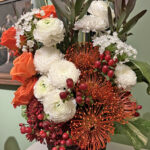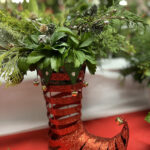Welcome to the Framingham Garden Club’s Community Giving Garden project! Here are a few Gardening How-To’s and Tips to help you get started. Check our website frequently for additional resources and information https://framinghamgardenclub.org/resources-information/
How to Start
As a new gardener your first question may be – how do I start? We are providing you with some items to help you get started – a starter kit – and then some tips on how you can grow even more.
For the first 50 families that have registered for the Community Giving Garden, the starter kit contains:
- A seedling, which is a very young plant grown from seed. Most of our seedlings are tomatoes.
- Seeds – for all participants in the CGG we are providing a packet of seeds, which has instructions on the back on where and when to plant so follow these instructions.
- A 5-gallon grow bag, which is a soft, breathable bag where you can plant vegetables and herbs.
- Soil in a compostable bag, for use either in your grow bag or in other containers. We are providing enough soil to get you started with your grow bag or another outdoor container. You should remove the soil from the compostable bag and place it in the grow bag or container to plant vegetables or herbs.
You can simply plant the seeds and seedling that we have given you or you may want to expand your garden and grow more, so we provide information on both options below.
What to Plant
Easy to Grow Vegetables: Some vegetables that are easy to grow both in the ground and in grow bags are tomatoes, peppers, zucchini, lettuce, radishes, peas, green beans, carrots, kale, beets, or squash, among others.
Easy to Grow Herbs: Include parsley, basil, chives, cilantro, sage, thyme, lemon balm, mint and others.
- All of these vegetables and herbs can be grown from seeds, but you can also start with seedlings, which can be purchased at local nurseries, farm cooperatives, and other locations.
Cold weather or warm weather plants? If you want to get started immediately, try cool weather plants. These are plants that germinate and grow at much lower temperatures and earlier in the season than warm weather plants. Leafy greens are some of the quickest and easiest cold weather plants to grow by seed. Many root vegetables also are cool weather plants.
Where to Plant
Vegetables and herbs grow almost anywhere, even on a sunny windowsill. Our tips will focus on outdoor growing. First, choose a sunny spot. Most vegetables do best in 6- 8 hours of direct sunlight per day.
Grow bags or containers
An easy way to garden in limited spaces is with grow bags or containers. You can tuck grow bags (and other outdoor pots with drainage) into corners of sunny balconies and porches.
Do not overcrowd your plants! Seedlings are small when planted but will grow to fill a much larger space. For example, in a 5-gallon grow bag you can grow either: • 1 tomato, pepper or zucchini, or • 3-4 lettuce, or • 1 cabbage or broccoli or • 15 carrots or beets. A convenient guide for how much to plant in different size grow bags is VP-RPXXXX-Farm-to-Table.pdf (gardenersedge.com)
Garden plots
If planting in the ground, a 10’ x 10’ garden (100 square feet) is manageable. If planting in a raised bed, a 4’ x 4’ or 4’ x 8’ is a good beginner size. The amount of space between each plant depends on the type of vegetation. Eighteen to 24-inches is recommended for larger plants like tomatoes, peppers, zucchini and others. Plant smaller plants closely and more densely, such as radishes, carrots, lettuce, beets, green onions and herbs. To maximize your space, try the square foot gardening method. This is explained at https://organicbackyardgardening.com/2020/06/06/square-foot-gardening-layout among other sites.
- Two important tips for beginners: start small and do not crowd your plants. If you undertake too large of a gardening project, you may become overwhelmed. Crowding plants is a common error made by beginners.
When to Start
Seeds – Starting with seeds is a great way to engage new gardeners, young and old. If you are sowing seeds, follow the instructions on the seed packages for timing and placement of seeds. These instructions will often suggest starting seeds indoors 6-8 weeks before the last frost date. Otherwise they will advise waiting until after the last frost date to sow seeds outdoors or to transplant your seedlings outdoors.
Please refer to our tip sheet on Starting from Seeds for more information.
Tip: The last frost date in Framingham is May 11 (give or take a few days).
Seedlings – Late April is a great time to plant cool weather seeds and seedlings either in pots or in the ground. However, warm weather plants, like tomatoes and peppers should not be planted or seeded until the soil is warm enough to encourage seed germination and/or root growth in seedlings, which is after the last frost. This year, Mother’s Day weekend is a great day to start your warm weather vegetables and herbs.
Starting from seedlings provides a head start to gardening with tomatoes, peppers and other warm weather vegetables, but can require several steps related to preparation of seedlings. Please refer to our tip sheet on Planting from Seedlings for more information.
For additional gardening steps that are described in other Tip Sheets on our Resource and Information webpage, go to https://framinghamgardenclub.org/resources-information/





